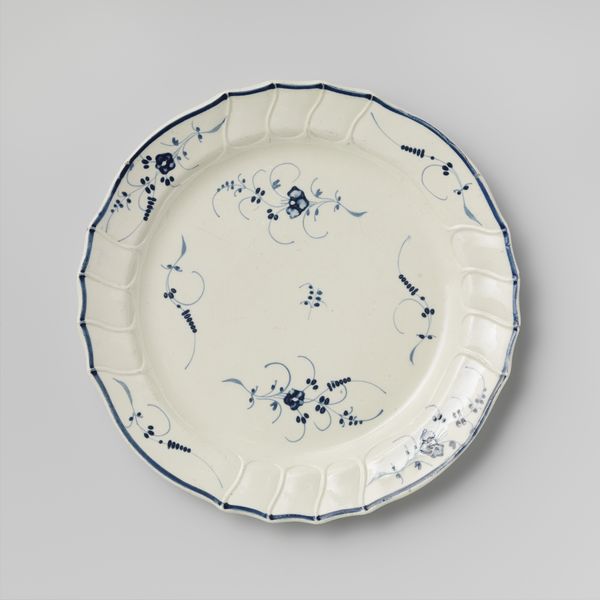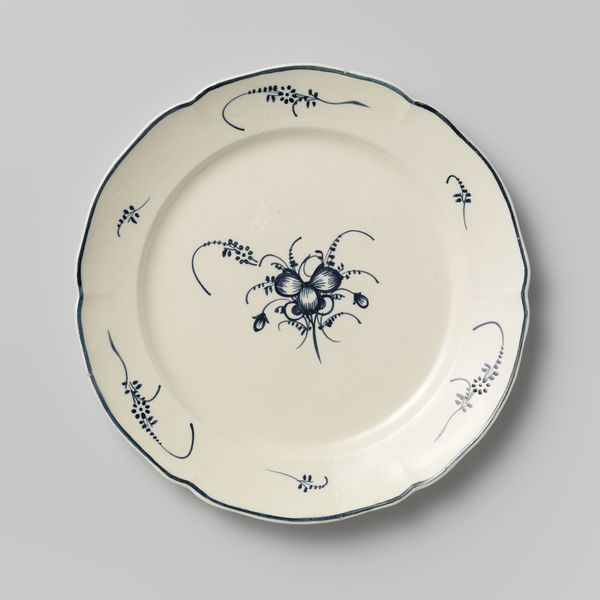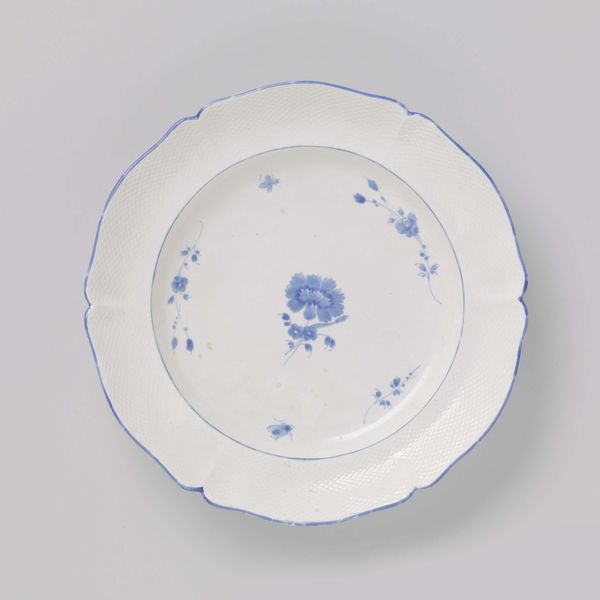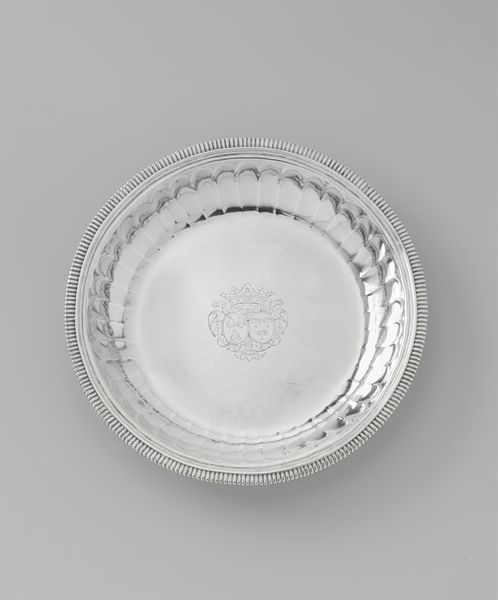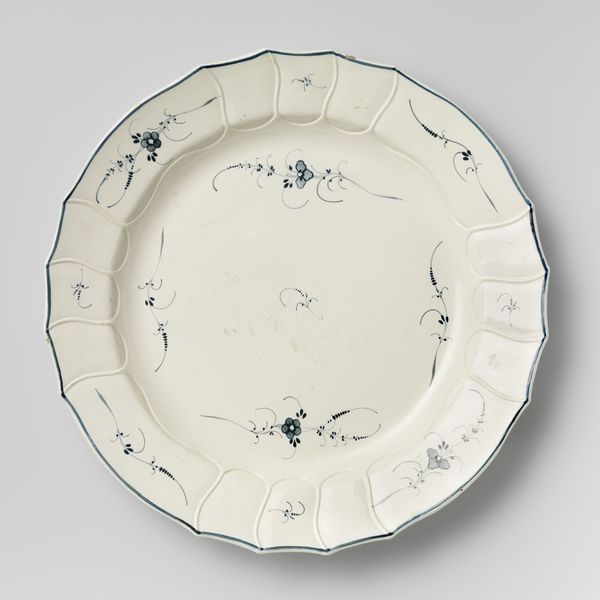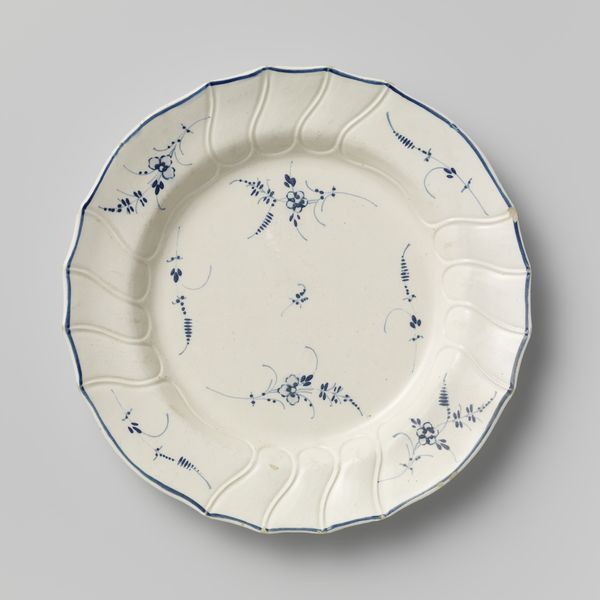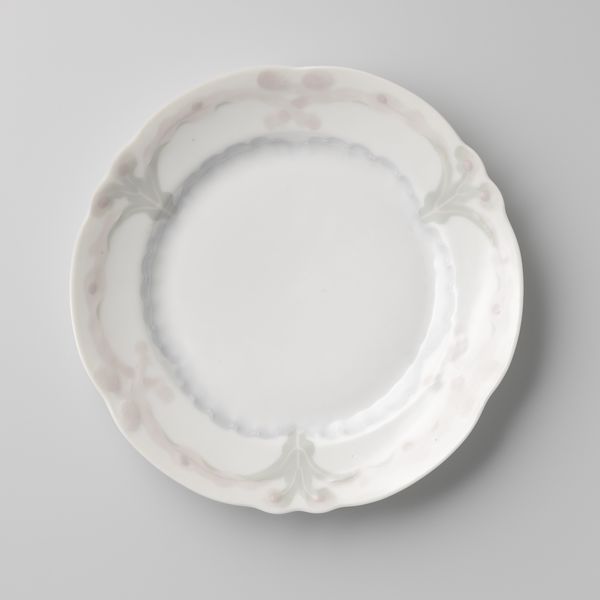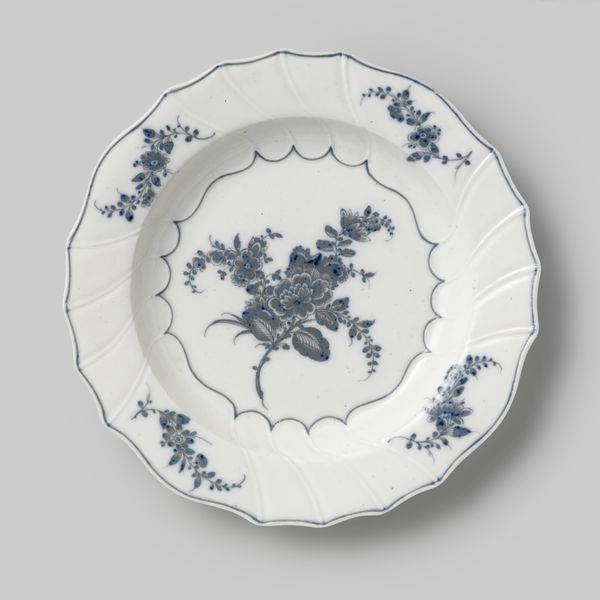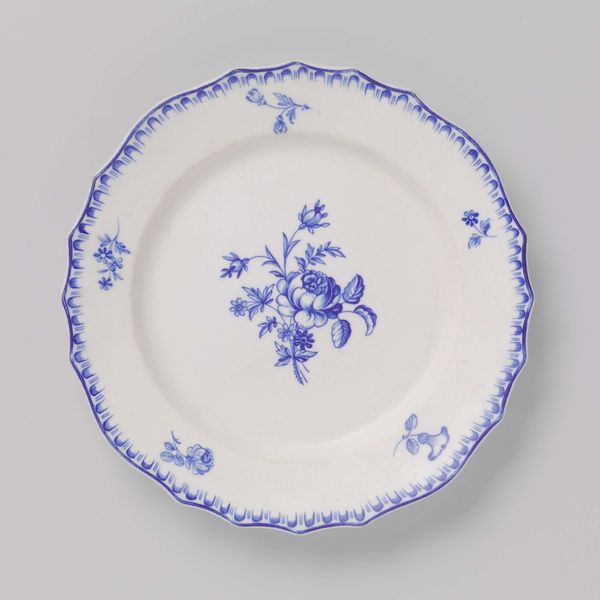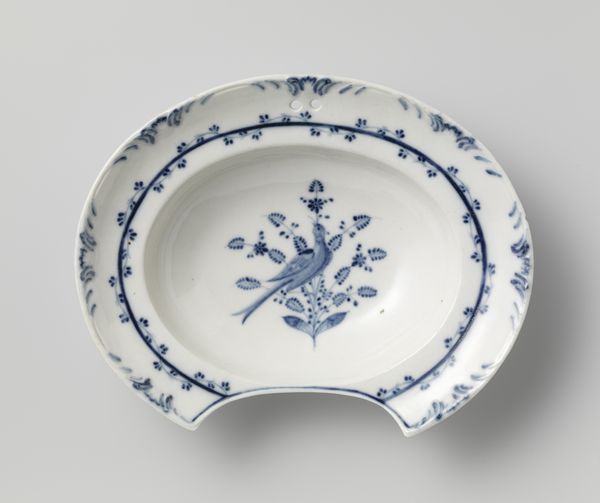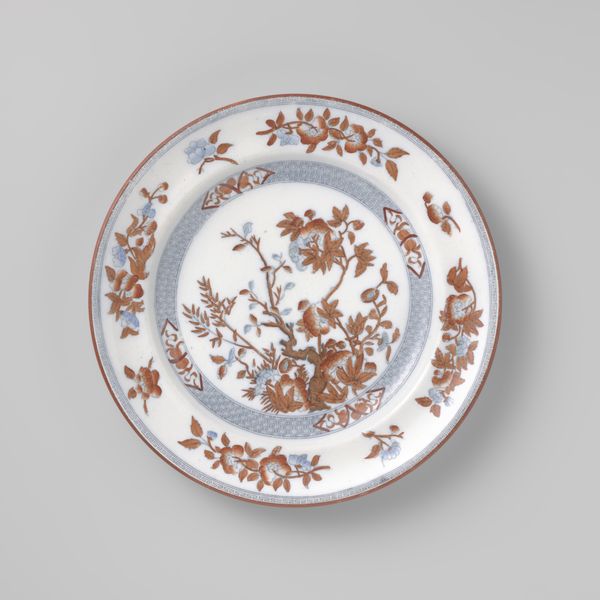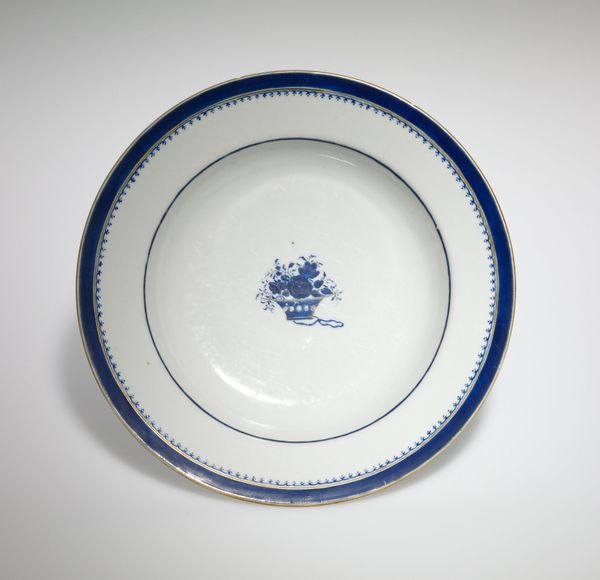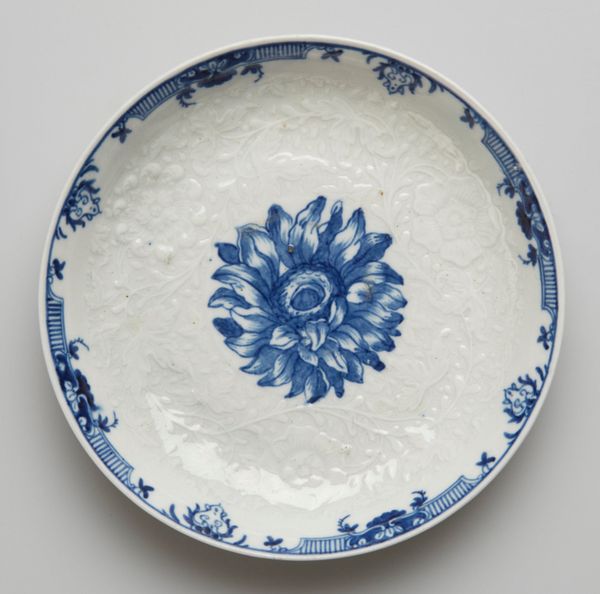
Dimensions: height 2.3 cm, diameter 22.7 cm
Copyright: Rijks Museum: Open Domain
Curator: Here we have a striking example of Dutch pottery: a plate by Boch, dating from around 1775 to 1810. It's made of what they called "engels hardgebakken aardewerk"—English hard-baked earthenware. Editor: It strikes me as immediately delicate. The scalloped edge and blue floral design on the stark white surface...it feels precious, not like something you'd use every day. More of a display piece. Curator: Exactly! It reflects the broader shift in the decorative arts towards Neoclassicism and Rococo during that period. The refined taste of the burgeoning middle class allowed for ornamental works, emphasizing beauty and craftsmanship in everyday objects. Editor: Let’s not forget how crucial the making itself is here. "Hard-baked earthenware," you say? The material tells the tale. How long would the firing take? How much control of this form and those fine painted lines depends on expertise with the raw clay? Was it all done in a manufactory with division of labour or by one artisan from start to finish? Curator: These are crucial questions! We believe Boch used sophisticated kiln technologies for the period to achieve that smooth, durable surface. And yes, the manufacture of ceramics, by this period, had increasingly centralized within larger workshops as demand surged. This obviously affected artistic training. Editor: So, it's about accessibility, isn't it? Ceramics like these became newly desirable for an aspirational market who wants fine art on a usable canvas—a new form factor. A signal, really, available for everyday appreciation. Curator: Certainly. This plate embodies that aspiration, demonstrating how art became woven into domestic life, expressing both taste and social status in late 18th century Dutch culture. Editor: In closing, beyond taste, this single plate represents a complex equation, in clay and pigment, of skill and value—how material changes aesthetic possibilities and market dynamics together. Curator: I agree, we cannot separate artistic styles from societal context; and by viewing pieces like this we open a window into those periods.
Comments
No comments
Be the first to comment and join the conversation on the ultimate creative platform.
